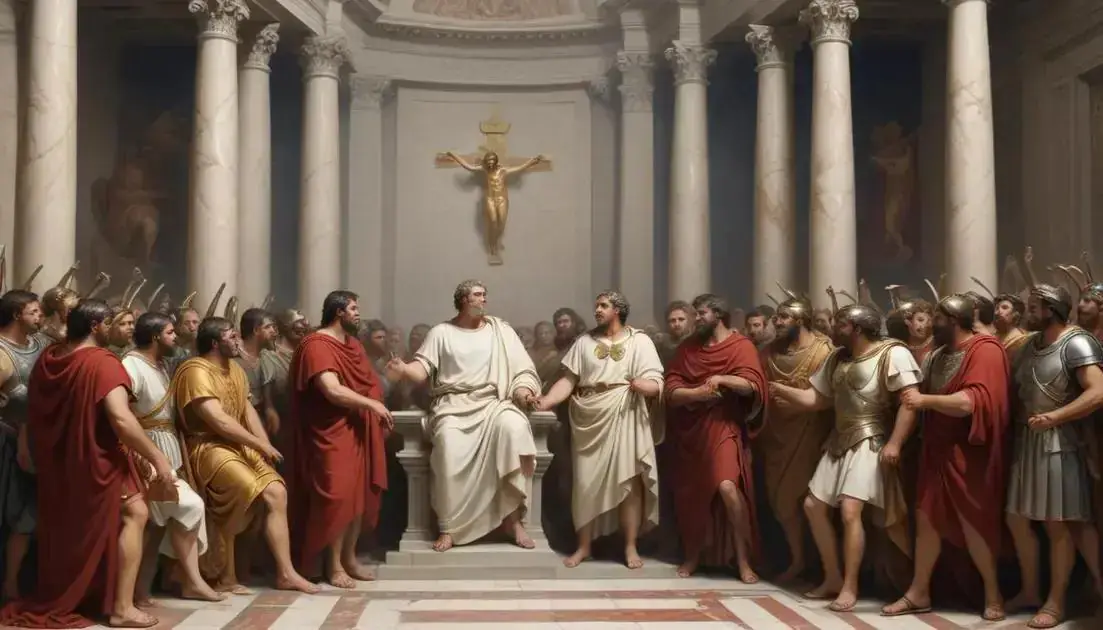
Crisis of the Third Century: Epidemics, Collapse and Opportunities for Christianity
The Crisis of the Third Century led to significant upheaval, marked by epidemics, societal collapse, and the rise of Christianity. During this tumultuous period, communities faced great challenges but also discovered new opportunities for connection and resilience. The spread of Christianity offered hope and support, enabling individuals to adapt in the face of adversity. By uniting under shared beliefs, people navigated through the chaos, rebuilding their lives and fostering community bonds that transcended the struggles of their time.
In the Crisis of the Third Century, the world witnessed chaos through wars and diseases, yet amidst these trials, Christianity thrived, offering hope and unity to many. How did this faith navigate such tumultuous times?
Epidemics and their effects
The epidemics during the Third Century had a huge impact on society. With diseases spreading quickly, many people fell ill, and communities suffered greatly. This led to fear and uncertainty in daily life.
How Epidemics Spread
Trade routes played a key role in spreading diseases. As merchants traveled to share goods, they also shared sickness. Cities became crowded, making it easier for viruses to pass from person to person.
Effects on Communities
As people got sick, families were torn apart. Many lost loved ones, and cities struggled to maintain order. Health systems were overwhelmed. This led to a breakdown in trust and security.
Social Changes
In the face of these challenges, individuals sought comfort in community and faith. Many turned to religion for hope. The rise of Christianity provided support and connection during tough times.
Lessons Learned
The epidemics taught societies about the importance of caring for one another. It showed how communities can unite in a crisis, strengthening bonds among people facing similar struggles.
Rise and spread of Christianity
The rise and spread of Christianity happened during times of great uncertainty. As the Roman Empire faced struggles, many looked for hope. Christianity offered a message of love and community.
How Christianity Spread
Early followers shared their faith through word of mouth. They traveled far and wide, spreading ideas and beliefs. This helped grow small groups into larger communities.
Support in Hard Times
During the upheaval, Christianity provided support and purpose. People found comfort in shared beliefs. The message of caring for others resonated strongly.
Influence of Apostles
Key figures, like the Apostles, played a big role. They taught and guided followers. Their dedication helped build the church and spread teachings.
Adaptation and Acceptance
As Christianity grew, it adapted to different cultures. This made it more approachable. People from various backgrounds felt welcome to join and participate.
Societal collapse and recovery
The collapse of society during the Third Century was dramatic. Wars, diseases, and economic troubles hit hard. People faced great uncertainty, and many left their homes.
Signs of Collapse
In many cities, structures fell apart. Markets dried up, and trade became scarce. The daily struggle for survival took over people’s lives.
Impact on Communities
As resources became limited, communities felt overwhelmed. Crime rates rose, and trust diminished. Neighbors often looked out for themselves instead of helping one another.
Paths to Recovery
After the chaos, recovery began slowly. Communities needed to rebuild their trust. People started to focus on supporting one another. The local church became a unifying force.
The Role of Christianity
Christianity played a key part in recovery. It inspired hope and offered guidance. Through shared beliefs, people found strength to rebuild their lives.
Opportunities in turmoil
Even in chaos, there were opportunities to be found. Many people saw turmoil as a chance for change. With the rise of Christianity, new ideas and support emerged.
Adapting to Change
During difficult times, people learned to be flexible. They adapted their ways of thinking. This led to innovative solutions for everyday problems.
The Growth of New Communities
Amidst the challenges, new communities formed. Individuals united under shared beliefs. These connections provided emotional support and practical help.
Economic Shifts
War and disease shifted economies, but new markets emerged. Some skilled workers found ways to enter different trades. This allowed them to thrive despite troubles.
Strengthening Faith
Many turned to faith as a source of strength. Christianity offered guidance and hope. It helped people stay focused on what truly mattered.
Conclusion
In conclusion, the challenges of the Third Century brought both suffering and new beginnings. The rise of Christianity showed how hope can emerge from turmoil. Communities rallied together, finding strength in shared beliefs. Even in tough times, opportunities arose for growth and connection.
People adapted and formed new relationships. They discovered ways to support one another while rebuilding their lives. As societies overcame obstacles, they learned valuable lessons about unity and resilience. Ultimately, this period highlights how strength can be found in faith and community, even amidst chaos.


